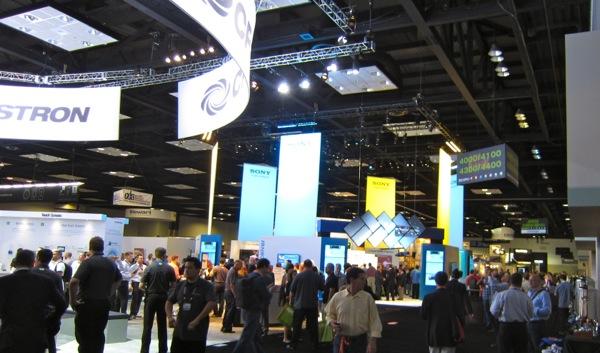Post-CEDIA Thoughts

I’ve been attending CEDIA since 1994, when then Stereophile publisher Larry Archibald decided it was time to begin a new publication dedicated to the burgeoning home theater businessthe Stereophile Guide to Home Theater. But even in the first year or two I attended, accompanied by Archibald, the Guide’s founding editor, Lawrence B. Johnson, and the requisite marketing crew, you could cover all of the exhibits in a couple of hours.
No longer. In the recent 2013 CEDIA EXPO, as in most CEDIA shows these recent years, the exhibit hall was huge. Not CES- huge, but certainly an affair that takes at least a couple of days to cover. For years home theater was the centerpiece of CEDIA Expo, but with the expansion of home electronics into home automation, security, and similar technologies only peripherally related to the serious enjoyment of movies and music, the event has become far more diverse. The casual observer might in fact see it as more a home automation show than a home theater bazaar.
But there’s still plenty of home theater-related stuff to see, and CEDIA is still the only show I know of with a significant number of serious home theater demos. Not as many as in previous years, perhaps, but enough for the EXPO to retain its home theater bona fides.
In fact, the growth of the number of high-end consumer audio shows in the past couple of years has uncovered a glaring issue: the lack of any dedicated home theater consumer shows.
That’s a discussion for another time, but the custom installation business itself has not benefited most audiophiles. Yes, it keeps a lot of audio/video stores afloat, as they now do a significant part of their business in custom installations. That’s important, but manufacturers must also now spend much of their R&D catering to the custom installation trade. Corner any speaker designer in a candid mood and ask about in-walls, for example, and he’ll either express his disgust about the limitations of such designs (of his company doesn’t make them) or struggle to hold back his true feelings (if it does and he’s not the owner).
The loss of business in affordable high-end audio components (high-end doesn’t have to mean high priced) has also triggered an explosion of insanely-priced audio gear, as dealers hope to pay the monthly rent by substituting one $20,000 sale for the ten $2000 deals he or she can no longer count on.
Fortunately, videophiles have it a little better—so far. While there are Tiffany-priced flat-screen sets and video projectors, the quality available at far lower prices is astonishing compared to what we had to choose from in the 1990s. Only the luddite might look back nostalgically at CRT projectors throwing upscaled, standard definition Laserdisc images on a 7-foot wide screen. This was considered primo in those daysa setup that would cost, at minimum for the video only, around $25,000. Often, in fact, it was several times that amount. Today we can do far better (thanks in particular to today’s high definition sources) for under $10,000and often well under.
But A/V installations have also become more complex since then, apart from no longer having to mount those humongous CRT projectors from the ceiling. True, you don’t need a doctorate in Audio and Video Science to set up a basic flat panel display and surround-sound system. But with 5.1-channel vs. 7.1 vs. 11.2, speaker and subwoofer placement, Audyssey vs. parametric equalization vs. no EQ, Internet Apps, downloading, streaming, wireless this or that, tablet vs. programmable vs. stock remote controls, PVRs, cable, satellite, MP3 vs. CD. vs. high resolution audio, Dolby Digital, DTS, Dolby TrueHD, DTS-HD Master Audio, HDMI, Toslink, SPDIF, Audio Return channel, and, most confusing of all, cables (only partly kidding there!), the technology and language are piling up faster than most busy A/V enthusiasts have time to research and absorb.
It’s our job to help sort all of this out for you, and explain it in an easy to understand way. And CEDIA can still help us keep on top of it all.





























































